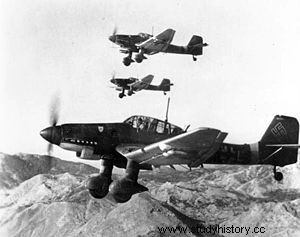
But it was all just illusions. The successes of the Germans had cost them dearly:during the first twenty-two days of the offensive alone, the German armored units had lost more than half of their tanks; as of July 19, 1,284 enemy aircraft were out of action. From July to September, great battles took place along the entire extent of the German-Soviet front.
In the North-Western sector, the Germans attacked towards Tallin, the main base of the fleet of the Baltic, and to Leningrad. The Soviet troops, supported by the navy, defended Tallin until August 28 and they only evacuated the city by sea on orders from the command, to ward off the threat hanging over Leningrad. The passage of the fleet to Kronstadt, on the Gulf of Finland, took place under exceptionally difficult conditions, the German air force having absolute control of the air. Of 195 warships, transports and auxiliaries, 53 were lost, but the enemy failed to annihilate the Baltic Fleet, which resumed its place in battle.
